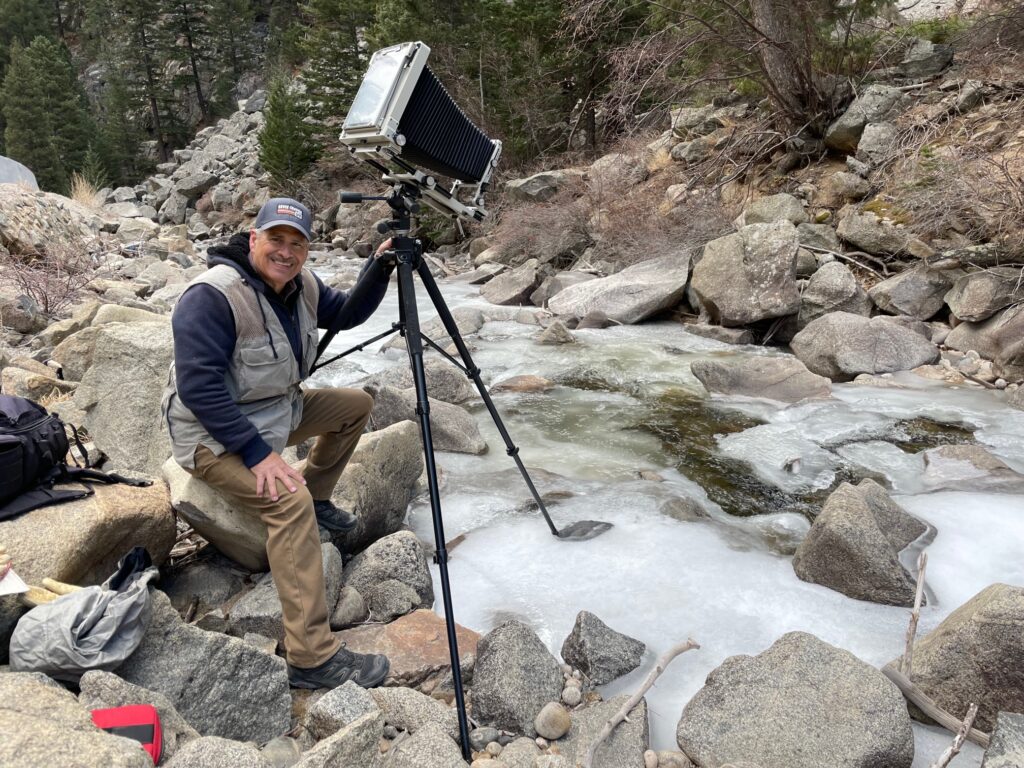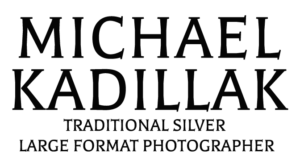
Photographic Musings
Being in the field making photographs regularly translates to interaction with a wide range of people on hiking trails and/or at specific sites where photographs are likely to be made. The elaborate process of setting up a tripod, affixing the large format camera to it, attaching the lens, and putting a dark cloth over it to compose an image creates various levels of curiosity that nearly always results in question “What Are You Are Doing?” The young, who grew up with digital image-making and have no experience with wet photographic process performed in a darkroom are perplexed and confused when I convey to them that I am taking a photograph with light-sensitive film. They are the generation that did not get the opportunity to experience analog “old school” image-making firsthand. I ask them if they would like to look for themselves under the dark cloth at the image on the ground glass. The image projected by the lens on the frosted ground glass is like watching a big screen television and it always elicits a sense of excitement and intrigue. Most have no idea that old school “film” is readily available assuming it has been effectively supplanted by technology and that in many instances film is still superior to digital.
Without exception the next question from in the field acquaintances is “Why would anyone want to carry all of that heavy equipment into the field when you could just carry a light digital camera? My answer is simply this. The laborious process of deploying skill and craft with the adjustments with the camera along with the darkroom chemical process produces silver gelatin prints that have a unique visual “glow” visually speak for themselves. As the old saying goes, the end justifies the means. Working with a large format camera inherently forces the photographer to have conviction with the images he decides to photograph because the effort to make the photograph (getting the equipment to the site to make the photograph) and the subsequent work that follows in the darkroom is extensive. The negative needs to be properly developed and then from the print needs to be made from the negative. The fear of failure with film given its cost also drives the photographer to the highly selective pursuit of excellence because there is no convenient “discard to the trash bin” button in the photographic darkroom process.
The last question asked of me is “Why do you photograph in Black and White instead of color” My response goes to the heart of the difference in the two types of film and how this directly relates to a basic question for the print viewer. “Which color does your eye naturally gravitate to in the print?” “The blue sky, the green foliage, the red rocks?” Subjectively these differing colors are in continuous competition for favorability within the color print as opinions vary greatly. The beauty of black and white photography is it eliminates any competing colors in the print by normalizing the entire image into unique proportions of black and white and the marvelous shades of grey that exist between these two extremities. As a result, the form and character of the black and white print eloquently connects the viewer with the image the photographer visualized. I feel “simple” in this regard is the personification of visual elegance. Edward Weston referred to this objective as “Seeing Plus”.
From the beginning of my photographic journey over 30 years ago the 8×10 inch view camera has been my go-to visual tool of choice. The larger size of the negative produces a contact print (the printing paper is pressed against the printing paper when it is exposed) so it is the pinnacle of visual presentation. A contact print is as good as it gets in the silver based photographic arena because there is no optical degradation from making large prints from smaller negatives using a photographic enlarger. When you are holding a well-executed 8×10 contact print in your hands you quickly see the inherent quality container therein. That is precisely why I continue to use the 8×10 (and larger) large format cameras and in my darkroom personally craft each negative to exacting development regiments to individually produce the best quality prints.
MICHAEL KADILLAK
site links
This website along with its photographic and literary content are the registered copyright of Michael Kadillak @ michaelkadillak.com.
Any redistribution or reproduction of any of its contents in any form is strictly prohibited.
